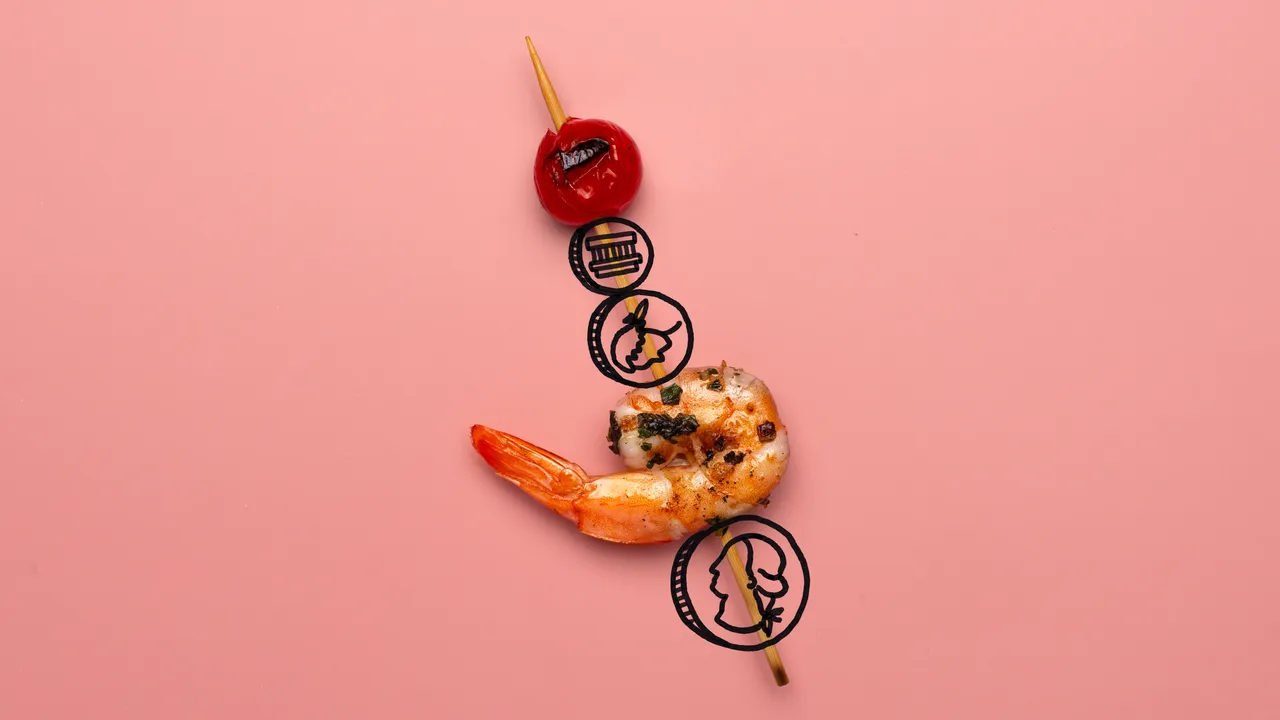Copyright The New Yorker

One morning in late September, the writer and former Times columnist Mark Bittman walked into the Lower East Side Girls Club, a rec center in Alphabet City and the site of what would become, in less than eight hours, his first restaurant. At 6 P.M., an inaugural group of guests would arrive for the soft opening of Community Kitchen, a not-for-profit fine-dining experiment that Bittman spent years concocting, and which had found a home—for the next few months, at least—in an underused café on the club’s ground floor. The multicourse tasting menu, cooked by a highly credentialled chef, would be elegant and refined, made with heirloom produce from local farms. Experienced servers might pour meticulously curated natural wines, ask the obligatory “Have you dined with us before?,” and swiftly fold the rumpled napkin of anyone who got up to use the rest room. What would set Community Kitchen apart from the dozens of restaurants like it across Manhattan and Brooklyn was the way patrons would pay: by purchasing tickets on a sliding scale—fifteen, forty-five, or a hundred and twenty-five dollars, based solely on what they felt they could afford—for an experience that would be identical regardless of tier. Bittman, who turned seventy-five this year, is tall, bald, and bespectacled, with a face that is often contorted into the expression of someone who doesn’t suffer fools; if he ran for office, “Nutrition is health care, stupid” might be his campaign motto. For many years, he was best known for his recipes: his iconic, enormous cookbook “How to Cook Everything” has been reprinted three times since 1998, and his weekly Times column, “The Minimalist,” instructed in pointedly unfussy home cooking (no-knead bread, chicken stir-fried in ketchup) for more than a decade. Around 2008, Bittman began to pivot from gourmand to polemicist, interrogating the systems, politics, and policies that shape the way we eat. When he talks about Community Kitchen, he uses gnomic declarative phrases that call to mind Michael Pollan’s mantra: “Eat food. Not too much. Mostly plants.” “Junk food is tasty, and it’s relatively cheap,” Bittman told me. “Cooking is hard. Eating in good restaurants is too expensive for most people. Access to good food should be a universal right.” Just before noon, the café was in relative shambles. Tables and chairs, still being upholstered in printed textiles, were belly-up in the middle of the dining room. The kitchen was empty, save for an enormous stockpot of broth, with chicken feet bobbing at the surface. Bittman seemed unconcerned. He had been careful in selecting the people in charge, including Rae Gomes, the executive director, and Mavis-Jay Sanders, the chef, both Black women in their late thirties who have worked in the food-justice movement, and he was determined to stay out of their way. Sanders, who wears her hair in a modified Mohawk and speaks in a fast, muttered clip, told me that she had been skeptical when Bittman first approached her. “I was just, like, cool, another white man doing this thing just so he can feel good,” she said. But Bittman was persistent, and, over the course of months, won her over. Sanders, who has cooked at multiple Michelin-starred restaurants, was invigorated by the idea that a restaurant could be both luxurious and equitable. She wanted Community Kitchen to have the trappings of the urbane, upscale places where she’d been trained—Gabriel-Glas stemware; All-Clad pots in the kitchen; carefully choreographed, warm, unobtrusive service. She also wanted to leave behind some of the industry’s less humane tendencies. “I feel like a lot of those places are about power, people positioning their power over other people,” Sanders said. “This room is about people, in service to other people.” By dinnertime, the café had been convincingly transformed into a restaurant, with tea lights twinkling beside wildflower arrangements on exactingly set tables. The food came out slowly as the kitchen found its first-night footing, but the service was smooth and steady. If you could accuse Sanders’s first two courses, one called “corn,” the other “tomato,” of being a bit precious and cheffy—they included, respectively, sips of warm tomato water and corn-silk tea—they were also exceptionally delicious, and each successive dish, vibrant and precise, raised the bar. A hearty but refined cassoulet featured a sliver of lamb rib, lamb sausage, and velvety braised beans. The broth I’d seen bubbling that morning was poured tableside into a bowl of fonio, a tender West African grain, and topped with wedges of seared radish and turnip, plus a brilliantly orange cured egg yolk. A few days after the soft opening, I joined Sanders as she shopped at the Union Square Greenmarket. I pointed out a bushel of habanada peppers, a hybrid championed by her old boss, Dan Barber, the chef-farmer of Blue Hill at Stone Barns, who works with breeders to develop highly particular fruits and vegetables. The peppers are identical to habaneros, but without the powerful kick. “It’s weird to breed the culture out of a pepper!” Sanders exclaimed. “How many times have you had a Scotch bonnet and you’re just, like”—her voice turned cartoonishly whiny—“I don’t liiiike this!” she said, laughing. But she clearly admired Barber’s iconoclastic impulse. “I moved to New York to understand how that man’s mind works, and it’s fucking fantastic,” she told me. “Anybody who’s just, like, You know what? What I want doesn’t exist, I will go create it.” In the United States, pay-what-you-can restaurants are, perhaps unsurprisingly, few and far between. In an era when it’s extraordinarily challenging for restaurants to turn a profit, many restaurateurs, particularly in fine dining, are looking for inventive ways to get more money out of their patrons, and to cater to the highest-paying among them. One of few businesses to succeed with a sliding-scale payment system is Everytable, a Southern California chain that sells prepared food for takeout, which charges different prices at different locations, depending on the average income level of the store’s Zip Code—a structure made possible by the fact that everything is made at a centralized off-site kitchen. At dinner at HAGS, a tiny three-year-old restaurant in the East Village, the tasting menu starts at a hundred and thirty-five dollars a person; on Sundays, brunch is pay-what-you-can, starting at nothing. Sunday brunch has become the restaurant’s busiest seating, with a roster of regulars, one of whom likes to pay with origami. The couple who own HAGS, Camille Lindsley and Telly Justice, spent years working at upscale restaurants before they set out to “queer” the archetype by designing a more inclusive model. “Any restaurant can figure out how much it would cost to offer food for free or sliding scale on whatever their loss-leader day is,” Justice said. “Make one dish sliding scale for one hour a day. Just do something.” Though the idea seemed radical, Lindsley and Justice learned, over time, to treat it as an ordinary thing. “We initially came in with a lot of literature and a lot of education, and we found that almost immediately, it’s a total turnoff,” Justice went on. “Nobody wants to learn about this. They just want to use it.” Bittman, who is working with a budget of more than a million dollars, sourced from private donors, including Bloomberg’s philanthropic arm, is determined to stay out of the for-profit game, though he recognizes the limits of operating as a nonprofit. He has an eye toward one day collaborating with the city: he purposefully chose Community Kitchen’s location for its proximity to several NYCHA buildings, and often references Restaurantes Populares, government-subsidized restaurants that were opened in Belo Horizonte, Brazil, in the nineteen-nineties, selling meals made with local produce for less than the equivalent of a dollar. “We’re waiting to find a way to talk to Mamdani,” Bittman told me, days before Community Kitchen opened. A few weeks after opening, he would tell me that attracting nycha residents to the restaurant was proving to be a challenge. The team had hired a community organizer to help draw them in. Fine dining, as a genre, is premised on exclusivity and scarcity, the sense that money functions as a private code. What would it be without those overtones? Two nights after my first meal at Community Kitchen, I returned for the first seating that was open to paying guests. The crowd was racially diverse, eclectically dressed, and tilted toward middle age; it was notably devoid of the preppy young white men who tend to populate the city’s tasting-menu restaurants. As I took a seat near the end of the bar, I found myself looking around at the other diners, guessing who had paid what, though I recognized, guiltily, that this defeated the purpose. A solo diner who appeared to be in his seventies looked scruffy enough that I wondered if he might be the occupant of an old rent-controlled loft in Alphabet City. But, as he was leaving, we struck up a conversation that quickly turned to the screenings he’d attended at this year’s Telluride Film Festival. He was, it emerged, a retired investment banker turned gentleman farmer who lived in Connecticut, and the natural wines appeared to have gone to his head. A manager swept in and, with practiced grace, suggested he might let me finish my meal in peace. To my left at the bar were a pair who looked to be in their early forties—a woman with a dark bob and heavily lined eyes, and a man in a track jacket—and who seemed to be on a first date, marked by awkward silences. Midway through the meal, I glanced over and realized they had disappeared between courses. The bartender, Cab Washington, who is also a standup comedian, told me that before they’d left he’d run into the man outside the bathroom. The man had said that the date was a dud, and that if Washington was interested he should ask the woman out. Even without the pressure of a bottom line, Community Kitchen delivered on characters and intrigue. It felt like any other night out in New York. ♦



